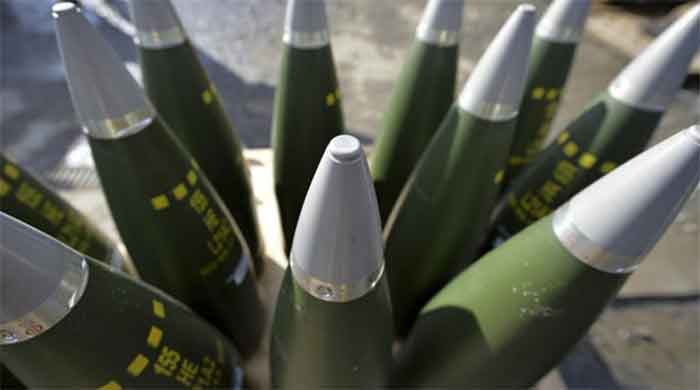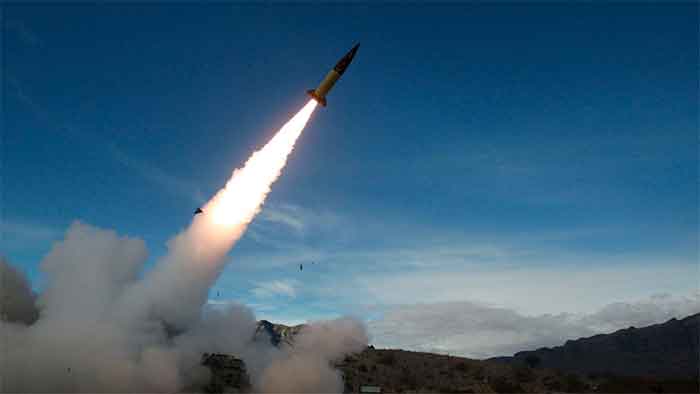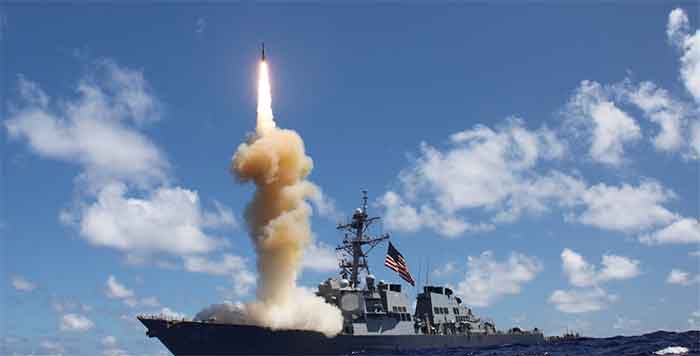
Sales of weapons and military services by the world’s top 100 arms makers totaled $597 billion last year, according to a report released by the Stockholm International Peace Research Institute (SIPRI) on Monday. U.S. firms continued to dominate the market despite seeing their overall revenues fall, according to the watchdog.
The combined figure for the top 100 arms companies marked a year-on-year decline of 3.5%, but was still 14% higher than the total recorded in 2015.
U.S. firms saw a combined decline of 7.9% to $302 billion, but still accounted for 51% of total arms revenue in 2022, with 42 U.S. companies represented among the world’s top 100. The revenues of the 26 European weapons makers in the rankings saw a slight increase of 0.9% to $121 billion.
According to SIPRI, the global decrease was mainly due to diminished revenues among major weapons producers in the U.S., where the sector struggled with “supply chain issues and labor shortages” related to the coronavirus pandemic.
SIPRI highlighted that global weapons production has lagged behind demand, which sharply increased last year due to the Ukraine conflict and global geopolitical tensions.
Moreover, numerous countries placed orders for weapons and military services at the end of 2022, the revenue from which is only expected to be reflected in company accounts in two to three years’ time.
Arms makers in Asia and the Middle East saw their revenues increase significantly last year, according to SIPRI, which said this demonstrated “their ability to respond to increased demand within a shorter time frame.”
State-run Rostec and the United Shipbuilding Corporation were the only two Russian companies in SIPRI’s top 100. Their total income amounted to $20.8 billion, marking a 12% decline year-on-year.
Revenues from arms trade increased substantially in Asia and Oceania and the Middle East. Outstanding orders and a surge in new contracts suggest that global arms revenues could rise significantly in the next few years.
Demand For Weapons Grows But Production Lags Behind
SIPRI said:
- The war in Ukraine and geopolitical tensions around the world fuelled a strong increase in demand for weapons and military equipment in 2022. However, despite receiving new orders, many U.S. and European arms companies could not significantly ramp up production capacity because of labour shortages, soaring costs and supply chain disruptions that were exacerbated by the war in Ukraine. In addition, countries placed new orders late in the year and the time lag between orders and production meant that the surge in demand was not reflected in these companies’ 2022 revenues.
‘Many arms companies faced obstacles in adjusting to production for high-intensity warfare,’ said Dr Lucie Béraud-Sudreau, Director of SIPRI’s Military Expenditure and Arms Production Programme. ‘However, new contracts were signed, notably for ammunition, which could be expected to translate into higher revenue in 2023 and beyond.’
SIPRI said:
- In contrast to the major U.S. and European suppliers, companies in Asia and Oceania and the Middle East saw their arms revenues grow significantly in 2022, demonstrating their ability to respond to increased demand within a shorter time frame. This was especially true in countries where companies maintain responsive ‘ever-warm’ manufacturing capabilities, such as Israel and South Korea, and those where companies tend to rely on short supply chains.
- Arms revenues fall in USA due to production challenges
- The arms revenues of the 42 US companies in the Top 100 fell by 7.9 per cent to $302 billion in 2022. They accounted for 51 per cent of the total arms revenue of the Top 100. Of the 42 US companies, 32 recorded a fall in year-on-year arms revenue, most commonly citing ongoing supply chain issues and labour shortages stemming from the Covid-19 pandemic.
‘We are beginning to see an influx of new orders linked to the war in Ukraine and some major U.S. companies, including Lockheed Martin and Raytheon Technologies, received new orders as a result,’ said Nan Tian, SIPRI Senior Researcher. ‘However, because of these companies’ existing order backlogs and difficulties in ramping up production capacity, the revenue from these orders will probably only be reflected in company accounts in two to three years’ time.’
Asia Outperforms Europe On Back Of Military Modernization Drives
SIPRI said:
- The arms revenues of the 22 companies from Asia and Oceania listed in the ranking rose by 3.1 per cent to reach $134 billion in 2022. This was the second consecutive year where Top 100 arms revenues for Asia and Oceania were higher than those for Europe.
‘Domestic demand and reliance on local suppliers shielded Asian arms companies from supply chain disruptions in 2022,’ said Xiao Liang, a researcher with the SIPRI Military Expenditure and Arms Production Programme. ‘Companies in China, India, Japan and Taiwan all benefited from sustained government investment in military modernization.’
SIPRI said:
- The combined arms revenues of the four South Korean companies in the Top 100 fell by 0.9 per cent, primarily due to an 8.5 per cent drop recorded by the country’s biggest arms producer, Hanwha Aerospace. Two South Korean companies reported revenue growth, most notably LIG Nex1. South Korean companies are likely to see increased revenues in coming years due to a surge in booked orders after signing major arms deals with Poland and the United Arab Emirates.
Modest Revenue Growth In Europe As Ukraine-linked Demand Starts To Filter Through
SIPRI said:
- The arms revenues of the 26 companies in the Top 100 based in Europe rose by 0.9 per cent to reach $121 billion in 2022.
‘The war in Ukraine created demand for materiel suited to a war of attrition, like ammunition and armoured vehicles. Many European producers of these items saw their revenues grow,’ said Lorenzo Scarazzato, a researcher with the SIPRI Military Expenditure and Arms Production Programme. ‘They included companies based in Germany, Norway and Poland. For instance, Poland’s PGZ increased its arms revenue by 14 per cent, benefiting from the accelerated military modernization programme the country is pursuing.’
SIPRI said:
- Trans-European companies Airbus and KNDS were among the main sources of arms revenue growth in Europe, largely due to deliveries against long-standing orders.
Turkish Companies Drive Significant Increase In Middle Eastern Arms Revenue
SIPRI said:
- The Middle East saw the largest percentage rise in arms revenue of any region in 2022, as all seven Middle East-based companies in the Top 100 recorded substantial growth. Their combined arms revenues of $17.9 billion marked an 11 per cent year-on-year increase. The four Turkish companies’ total arms revenues reached $5.5 billion — 22 per cent more than in 2021. The aggregate arms revenues of the three Israeli companies in the ranking reached $12.4 billion in 2022, a 6.5 per cent increase compared with 2021.
‘Middle Eastern companies that specialize in less technologically sophisticated products were able to scale up production faster in response to surging demand,’ said Dr Diego Lopes da Silva, SIPRI Senior Researcher. ‘A case in point is Türkiye’s Baykar, producer of the Bayraktar TB-2 drone. Baykar entered the Top 100 for the first time after its arms revenue rose by 94 per cent, the fastest growth rate of any company in the ranking.’
China, UK, Ukraine – Notable Developments
SIPRI said:
- In 2022 China accounted for the second largest share of combined Top 100 arms revenues by country, at 18 per cent. The aggregate arms revenues of the eight Chinese arms companies in the ranking increased by 2.7 per cent to $108 billion.
- The arms revenues of the seven companies in the UK listed in the Top 100 grew by 2.6 per cent to reach $41.8 billion, or 7.0 per cent of the total.
- Due to a lack of data, only two Russian companies were included in the Top 100 for 2022. Their combined arms revenues fell by 12 per cent to $20.8 billion. Transparency among Russian companies continues to decline. Despite being a holding entity with no direct manufacturing capacity, Rostec is included in the 2022 ranking as a proxy for the companies it controls.
- The only Ukrainian company in the Top 100, UkrOboronProm, saw a 10 per cent real-terms drop in its arms revenue to $1.3 billion. Although its arms revenue increased in nominal terms, this was more than offset by the country’s high inflation.















































